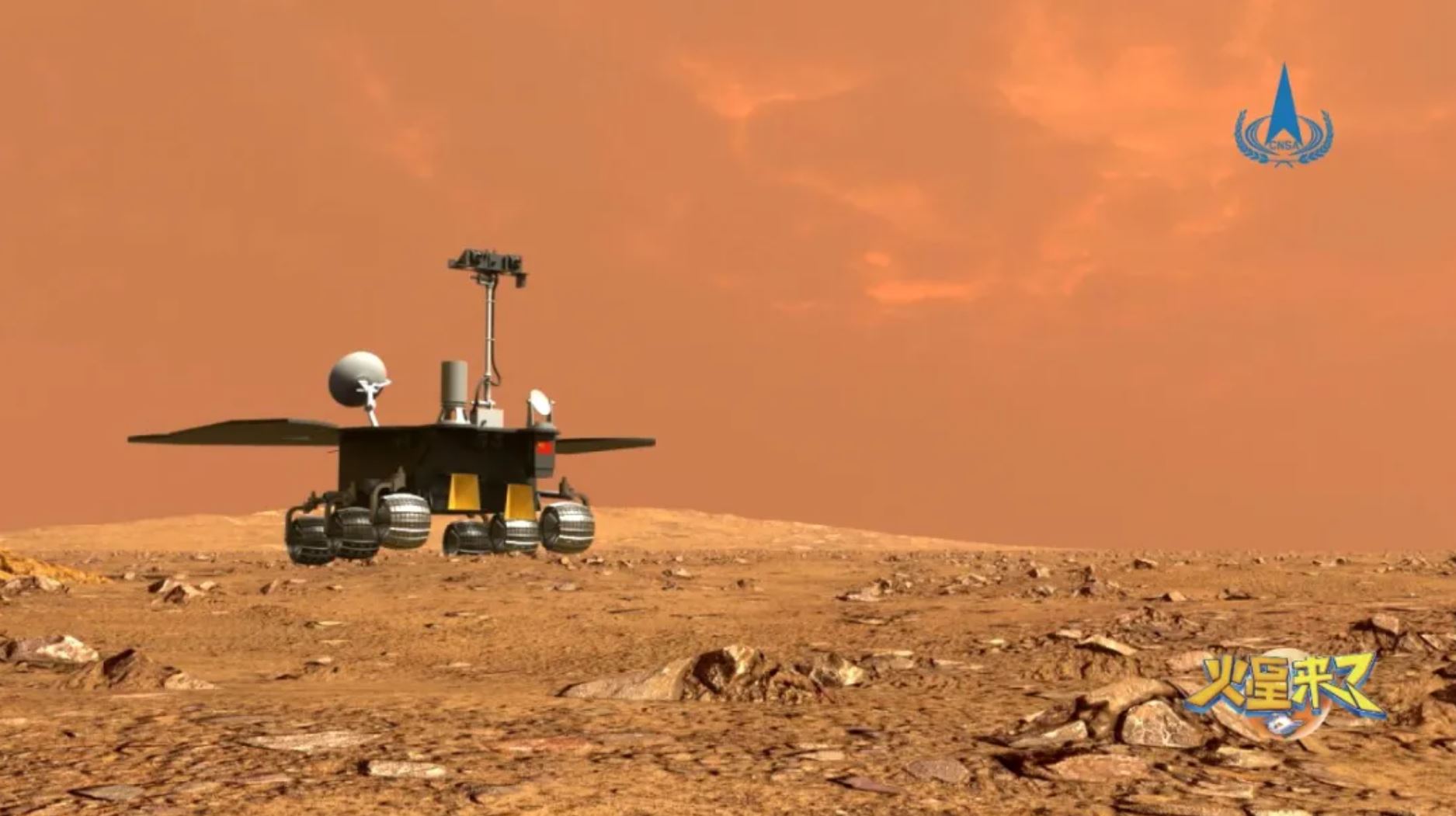Meet 'Zhurong': China names Tianwen-1 Mars rover ahead of mid-May landing attempt
The rover was named after an ancient fire god.

China has named its first-ever Mars rover "Zhurong" after an ancient fire god ahead of a landing attempt on the Red Planet in May.
The China National Space Administration (CNSA) revealed the name at the sixth China Space Day held in Nanjing on Saturday (April 24).
Zhurong was the most popular of 10 shortlisted names for a public vote that opened in January, and that choice was backed by an expert panel and the CNSA itself.
Related: The latest news about China's space program
Going with the fire god is apt, for the Chinese name for Mars, "Huoxing," literally means "fire star."
The roughly 530-lb. (240 kilograms) solar-powered Zhurong rover is part of the Tianwen-1 mission, which launched in July 2020 and arrived in orbit around Mars in February.
The Tianwen-1 orbiter has been collecting high-resolution images of Zhurong’s target landing site in Utopia Planitia. The landing attempt is expected in mid-May, according to a senior Chinese space scientist.
Breaking space news, the latest updates on rocket launches, skywatching events and more!
The rover carries panoramic and multispectral cameras and instruments to analyze the composition of rocks. Zhurong will also investigate subsurface characteristics with ground-penetrating radar, if all goes according to plan.
Follow us on Twitter @Spacedotcom and on Facebook.

Andrew is a freelance space journalist with a focus on reporting on China's rapidly growing space sector. He began writing for Space.com in 2019 and writes for SpaceNews, IEEE Spectrum, National Geographic, Sky & Telescope, New Scientist and others. Andrew first caught the space bug when, as a youngster, he saw Voyager images of other worlds in our solar system for the first time. Away from space, Andrew enjoys trail running in the forests of Finland. You can follow him on Twitter @AJ_FI.
